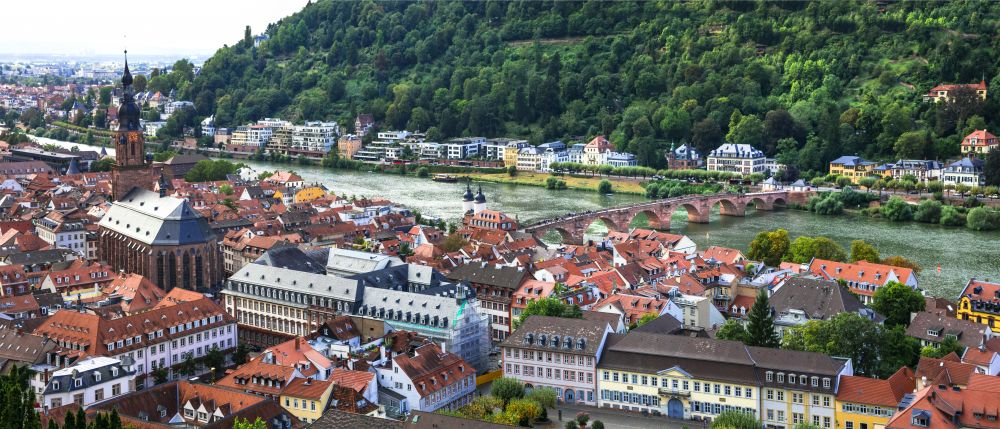
Heidelberg’s Bahnstadt is the size of the city’s entire Old Town, spanning just over a square kilometre (100ha). A former brownfield site, it is now in its final phase of construction. It is Heidelberg’s first passive-house district and one of the largest passive-house neighbourhoods in the world. The development is a testing ground for the most ambitious initiatives of Heidelberg’s Masterplan 100% Klimaschutz (100% Climate Protection Masterplan), which aims to cut greenhouse gas (GHG) emissions by 95% by 2050. Bahnstadt will be completed in 2022 and has created 6,000 jobs since work began in 2010.
What is special about Heidelberg’s Bahnstadt district?
Once complete, the Bahnstadt district will be home to around 6,500 people and be near zero carbon in operation. The homes built in the district to date have annual CO2 emissions for energy use of just 0.13 tonnes per inhabitant compared with the Heidelberg city average of 2.0 tonnes. This has been achieved in a number of ways:
- All buildings, both public and private, have been constructed according to passive-house standards. Building envelopes are highly thermally insulated, airtight and fitted with triple-glazed windows.
- The district’s street lighting uses LED technology and a tele-management system to adjust lighting to actual demand.
- Smart metres have been installed in more than 3,000 buildings to monitor energy consumption and identify areas for potential savings.
- The district’s energy demand is fully met by a nearby wood-chip combined heat and power station, which is part of the local district heating network.
Bahnstadt’s build cost has proven comparable with non-passive-house projects of a similar scale in the region and operating energy costs are significantly lower. The reduction in overall cost has allowed 20% of Bahnstadt’s homes to be designated for social housing.
Bahnstadt, which is next to the central train station, has also been designed to minimise transport emissions. A tramline has been extended to include three stops in the area, while 3.5km of new cycle paths to date connect the district with the city centre and other neighbourhoods. A network of charging stations for electric vehicles has been installed, including in public spaces and in private underground carparks. Walking and cycling are also encouraged by a new 1.5km public park in the district, created on the site of an old railway siding.
Lastly, to reduce the risk of flooding in spring and autumn, the district has water-retention basins that allow rainwater to infiltrate into the ground rather than flood the sewer system. Bahnstadt’s building-scale goal of 66% green roofing also helps to reduce flood risk, as well as to provide a habitat for wildlife.

